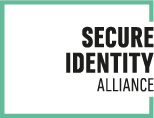The changing face of identity

By Michael Brandau, Chair of the Secure Identity Alliance's Border Working Group.
With technology, Covid-19, and a number of other factors driving major change at the border, the Secure Identity Alliance has updated Strong Identity Strong Borders, a guide designed to help anyone who wants to understand the subject more, but who is not an expert.
Strong Identity, Strong Borders introduces the key concepts and explores the evolution of border control, and how those responsible for safeguarding their territory can embrace new approaches around identity in order to create secure, seamless, and streamlined passenger experiences.
The changing face of identity at the border
With scientific and technological innovation occurring at breath-taking speed, a wealth of new tools and techniques are helping to fundamentally redefine the nature of identity. Simple photography has been supplemented by new and increasingly incontrovertible ways to prove that a visitor is who they say they are, from biometrics to facial recognition.
Border control is an essential task, but one that also involves many significant challenges. There are several complex drivers, including:
• Security – national borders play a crucial role in protecting a country’s security, in detecting and preventing the entry of travellers who may want to do the country harm.
• Facilitation – a good border function needs to be focused on allowing genuine passengers/travellers enter the country as quickly and easily as possible.
• Technology transition – new technology innovations are being developed to assist border security that build on existing achievements with biometrics - ePassports, eGates, Advance Passenger Information, and others.
• Global context—all of this is taking place in an increasingly interconnected world. As a result, there is a need for international co-ordination, agreements, and standards.
When a passenger arrives at a border, the border officer wants to see evidence of that person’s identity (a passport or identity card) and to verify that the person, the travel document, and the identity presented all match. Strong Identity, Strong Borders looks at the crucial role that identity plays in border security.
A framework for border security
While there is no single universal solution for border security as circumstances vary considerably between countries, a generalised framework can be applied to the pursuit of stronger border control. The following issues will need to be considered as part of that framework.
• Cost effectiveness – no country has limitless resources with which to create the ‘perfect’ border control solution and a balance needs to be made between security, facilitation, and the resources the country can allocate.
• Balance – it is important for each country to decide what is right for their individual needs. It is up to each country to decide on the balance of security, facilitation and cost effectiveness that is implemented.
• Delivery – the chosen strategy needs to be well-managed. This goes beyond simply making choices about technology and will involve good project delivery and change management; the development of new business processes to make use of new technologies; and the integration of new and old systems and data.
• Partnership – border control is never possible in isolation: an effective system will be even more effective when it is delivered in partnership with others.
Bringing strong borders to life
Around the world, border control authorities are adopting new techniques to tackle their security challenges. Strong Identity, Strong Borders features numerous examples of these innovative approaches across the World.
Looking ahead
There is every reason to expect new challenges to border control will continue to emerge in the future. Fortunately, there are also several new technologies and other solutions being developed to help. These include:
• An increased use of biometrics and integration between passengers, border services and airport operations, as envisaged by the ACI’s Smart Security and IATA’s One ID initiatives.
• Mobile solutions that deliver ready access to information and services wherever the user needs to be.
• The next generation Logical Data Structure on the ICAO 9303 secure passport / ID card chip (LDS-2), which offers more chip memory and allows for more data from the issuer and potentially for other countries to write data securely into the chip.
• The ICAO is also developing new forms of trusted identity under the concept of Digital Travel Credentials (DTC). This will comprise a two-part solution of a linked physical and a virtual component.
• The German Federal IT Security Agency (BSI) has recently defined a new security specification allowing advanced, secure chips to be certified as being able to hold trusted identity data.
Offering in-depth analysis of the evolving border control challenge, and the new and innovative techniques that authorities can employ to conquer it, Strong Identity, Strong Borders is available now as a free download here.
La version française est disponible ici.

